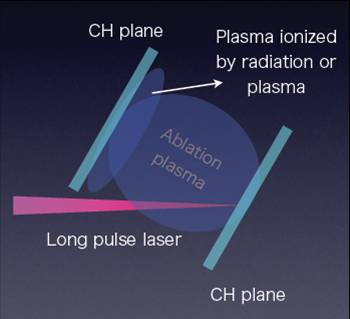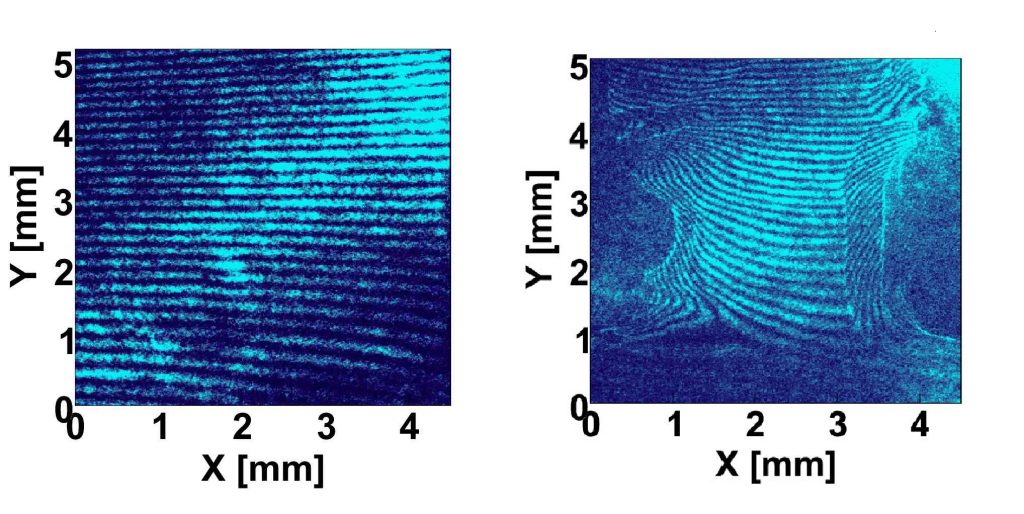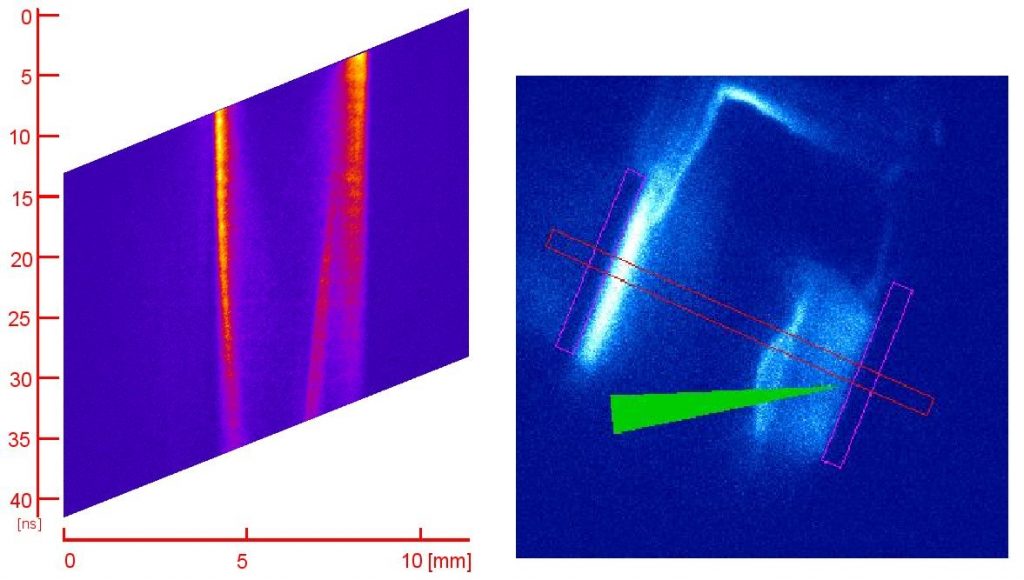Laser Astro Experiment (LAE)
Summary
Many theoretical studies have shown that high-energy cosmic rays originate when charged particles on the wave fronts of shock waves, such as those from supernova remnants, active galactic nuclei, and solar flares, are accelerated to relativistic energies. However, this has not been experimentally verified. In the LAE group, we conduct experimental studies of shock waves generated by high-power lasers with the goal of elucidating the structure of shock waves, the physics of particle acceleration, and the mechanism of magnetic field generation.
We also perform heating experiments for fast-ignition fusion research.
Research topics
Physics of cosmic shock waves and particle acceleration
Many theoretical studies have shown that high-energy cosmic rays originate when charged particles on the wave fronts of shock waves, such as those from supernova remnants, active galactic nuclei, and solar flares, are accelerated to relativistic energies. However, this has not been experimentally verified. In the LAE group, we conduct experimental studies of shock waves generated by high-power lasers with the goal of elucidating the structure of shock waves, the physics of particle acceleration, and the mechanism of magnetic field generation.
Collisionless shock waves
Often formed in plasmas, collisionless shock waves are shock waves in which there are hardly any collisions between particles due to the extremely large particle mean free paths relative to the thickness of the shock wave front. Most of the shock waves observed in the universe are collisionless shock waves because much of the universe consists of low-density, high-temperature plasma. Under gaseous or atmospheric conditions, particle dissipation is caused by extremely frequent particle collisions, but in collisionless plasmas, particle dissipation is caused by the electric and magnetic fields generated in the plasma, resulting in collisionless shock waves.

The figure above shows the supernova remnant known as “SN1006.” The graph to the right shows the shock wave front X-ray intensity distribution. A shock wave of roughly 0.04 pc (parsecs) is generated where the mean free path is 13 pc.
Shock wave generation experimentation using lasers
We use the The University of Osaka Institute of Laser Engineering’s GEKKO XII laser, as well as high-intensity lasers such as those in France’s Ecole Polytechnique and in Shanghai to perform experimentation. Nanosecond laser pulses with an energy of 100 J to 1 kJ are focused on areas of 1 mm or less, generating high-speed plasma streams with speeds as high as 1000 km/s.

Figure 1. Schematic diagram of target
We study the generation of collisionless shock waves by creating collisionless plasma countercurrents as shown in Figure 1. We use shadowgraphs and interferometry from lasers oriented perpendicularly to the plasma currents to measure plasma density and luminescence, thereby measuring the density and temperature of the plasma.

Figure 2. Sample interferometric images. Before laser irradiation (left) and 9 ns after laser irradiation (right).
Figure 2 shows an example of our interferometry measurements. A distorted interference pattern is created when light that has passed through a plasma is overlapped with light that has passed through a vacuum due to phase differences. The distortion can be used to calculate the density of the plasma. In Figure 2, plastic targets were placed at the left and right edges, and the target to the left was irradiated with a laser. The sudden changes observed in the interference pattern near the 3 mm area to the right indicate that a shock wave was generated.

Figure 3. Change in plasma light emission over time (left) and 2D image (right)
The left image in Figure 3 shows the change over time of plasma light emission as recorded by a streak camera. The vertical axis represents time, and the horizontal axis represents spatial distance; the image allows us to track the change over time in one dimension. At right is a 2D image taken 25 ns later. As such, shock wave generation can be captured through both change over time data and 2D images.
Member
| Youichi Sakawa | Associate Professor |
